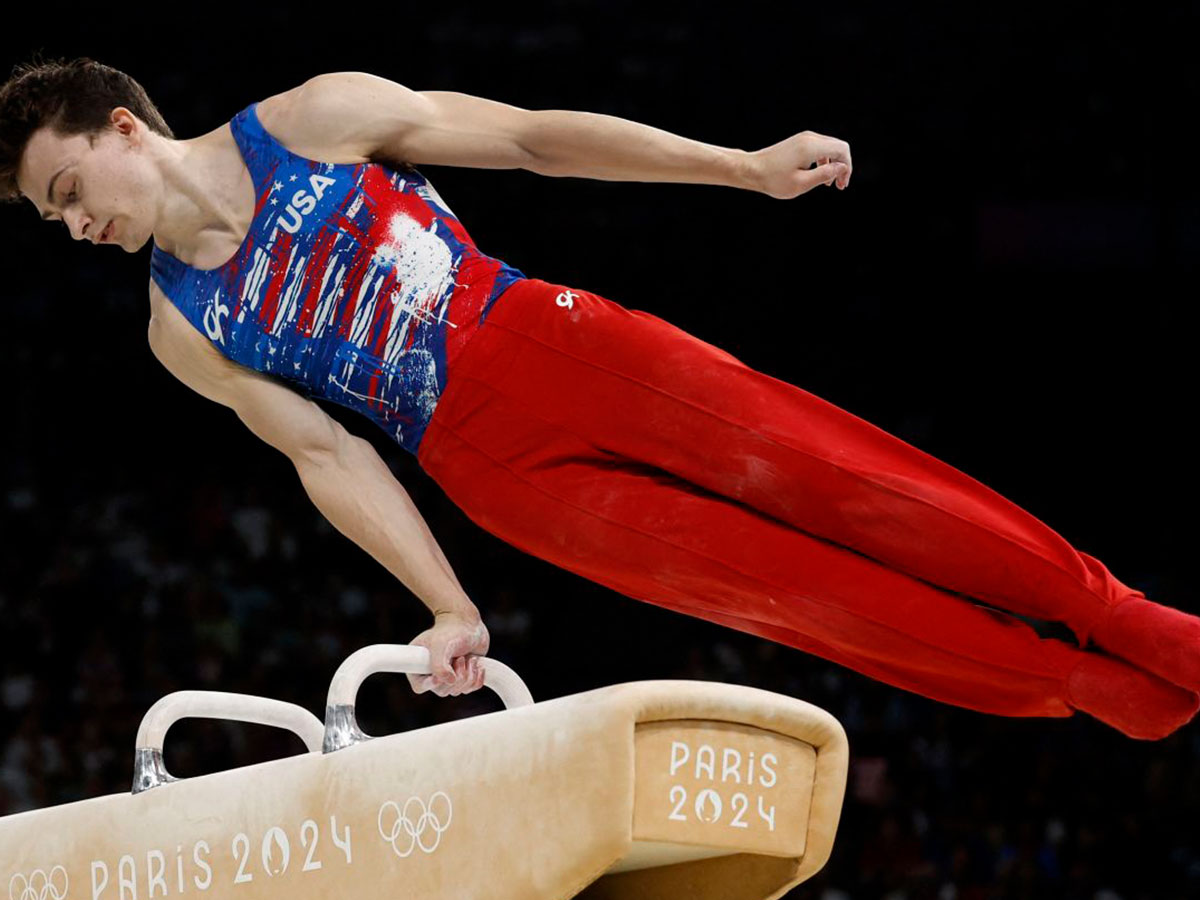
Olympic Athletes with Visual Impairments Rely on Their ‘Sixth Sense’
Vision-impaired athletes have been making waves at the Olympics by competing with a unique ability often referred to as a ‘sixth sense.’ Let’s dive into how these remarkable athletes overcome their visual challenges to excel in their sports.
Stephen Nedoroscik and the Art of Gymnastics
During the men’s gymnastics pommel horse finals at the Paris Olympics, Stephen Nedoroscik, a pommel horse specialist, put on an impressive performance despite having visual impairments. He ditched his glasses before stepping up to the apparatus and nailed his routine, securing his second bronze medal of the Games.
Nedoroscik isn’t alone in his achievements. Other vision-impaired athletes like Irish swimmer Daniel Wiffen and Brazilian gymnast Rebeca Andrade are also shining in their respective sports. Wiffen won gold in the 800m freestyle, while Andrade has previously won gold in the vault finals and continues to perform at a high level despite her visual challenges.
The Power of Neuroplasticity
Nedoroscik suffers from strabismus, which is a misalignment of the eyes, and coloboma, a condition involving a loss of eye tissue. These conditions can affect depth perception, which is critical in sports like gymnastics. However, athletes with visual impairments have an incredible ability to adapt, thanks to a concept known as neuroplasticity. This is where the brain compensates for missing visual input by strengthening other senses, such as touch and proprioception.
Understanding Proprioception
Proprioception, sometimes called the “sixth sense,” is our body’s awareness of its position and movement in space. It allows athletes to know where their body parts are without looking at them. For athletes like Nedoroscik, proprioception is crucial. He explains that in gymnastics, especially on the pommel horse, he relies on the feel of his movements rather than sight.
The Role of Other Senses
According to Dr. Rupa Wong, a pediatric ophthalmologist, and Dr. Gordon Waddington, a sports medicine expert, athletes with vision impairments learn to rely more on their other senses, like hearing and touch. This helps them maintain balance and coordination. By focusing on sensory inputs from the body and environment, athletes can form a mental image that allows them to perform complex tasks without perfect vision.

Goalball: A Lesson in Adaptation
In sports specifically designed for vision-impaired athletes, such as goalball, players use their hearing to track a ball with bells and their touch to navigate the court. Tyler Merren, a US men’s goalball co-captain, says this sport emphasizes the use of non-visual senses to understand the game. Players rely on sound, tactile markers, and communication with teammates to excel.
Visualization and Mental Imagery
Athletes, regardless of their vision, often use visualization techniques to enhance their performance. Stephen Nedoroscik practices mental imagery by visualizing his gymnastics routine from start to finish. Even with limited vision, he can picture the moves and feel the motions, helping him execute his routine flawlessly.
Inspiring the Next Generation
These athletes are role models for young people with visual impairments. They show that limitations can be overcome with determination and adaptation. As new treatment methods and technologies emerge, more opportunities will become available for visually impaired children to participate in sports.
Dr. Wong emphasizes that these athletes serve as a source of inspiration. Their openness about their journeys and challenges offers hope to the next generation, proving that vision impairments are not barriers to achieving greatness.
Vision-impaired Olympic athletes are redefining what it means to compete at the highest level. By harnessing their unique abilities and adapting to their visual challenges, they demonstrate resilience and determination. Their stories inspire others and pave the way for a future where sports are inclusive and accessible to all.



